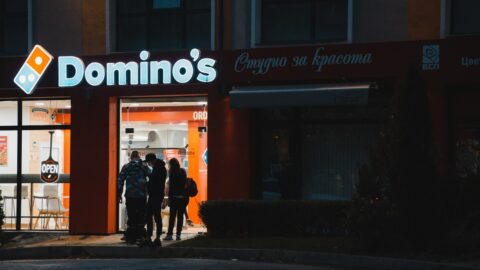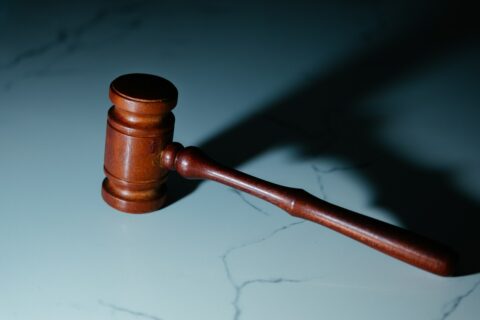Special law of electronic evidence: Section 65B of The Evidence Act, 1872
By Varun Singh & Ruben George Rock
A 2005 ruling of the Supreme Court of India in the State (NCT of Delhi) v. Navjot Sandhu alias Afsan Guru, which stood as an authority for more than nine years on the admissibility of secondary evidence pertaining to electronic record stands overruled by the decision of the Division Bench of the Supreme Court of India in Ansar P.V. v. P.K. Basheer and others[1].
Advancement in technology and its application across various dimensions has resulted in creation and storage of information in electronic form necessitating a substantial change in the law regarding electronic evidence. In order to bridge the widening gap between law and technology, the Parliament enacted the Information Technology Act, 2000 (“IT Act”). Amongst other things, the IT Act defined terminologies such as that of “data”, “electronic record”, “computer”, “computer output” etc. Apart from introducing new concepts, the said legislation also brought an amendment to the Evidence Act, 1872 providing special provisions for adducing electronic evidence in Courts.
The said amendments to the Evidence Act, 1872 brought about following changes:
- Section 59 was modified in order to exclude proving of contents of documents (including electronic records) by oral evidence. By inserting Sec 22A, it was provided that oral evidence with respect to contents of electronic records is relevant only when genuineness of the record is in question.
- Section 45A was inserted in the Evidence Act, which provides that opinion of Examiner of Electronic Evidence will be relevant fact when the Court has to form an opinion on any matter relating to information in electronic form. Who can be the Electronic Evidence Examiner for the purpose of this Section is mentioned in Sec 79A of the Information Technology Act.
- The highlight of the amendment was insertion of Section 65A& 65B which deals with admissibility of electronic record. Section 65A, in a way similar to section 61, provides for introduction and applicability of the special provisions (section 65B) for evidence relating to electronic record.Section 65B of the Evidence Act entails special procedure for adducing electronic records as evidence in a Court of law. Section 65 B provides for technical and non-technical conditions and the manner for adducing electronic evidence.
In spite of having a special procedure for adducing electronic evidence, Indian Courts have shown reluctance against getting in terms with this advancement and have continued to apply the general provisions set in sections 63 and 65 of the Evidence Act for adducing electronic evidence. The same came to be highlighted, when the Division bench of the Supreme Court in Navjot Sandhu’s case raised uncomfortable questions about the integrity of prosecution evidence. It was observed by the Supreme Court that the interception of telephone calls for collecting the said evidence violated privacy laws in several ways. The question of non compliance to Section 65 B of the Evidence Act also came up. In spite of the said infirmities in the evidence put forth, which should have disqualified the evidence, the Supreme Court allowed admission of the Evidence under Section 63 and 65 by holding that “[I]irrespective of the compliance of the requirements of Section 65B which is a provision dealing with admissibility of electronic records, there is no bar to adducing secondary evidence under the other provisions of the Evidence Act, namely Sections 63 & 65. It may be that the certificate containing the details in sub-Section (4) of Section 65B is not filed in the instant case, but that does not mean that secondary evidence cannot be given even if the law permits such evidence to be given in the circumstances mentioned in the relevant provisions, namely Sections 63 & 65.”
Similar set of principles also came to be applied in the case of Ratan Tata v. Union of India[2], where the Apex Court did not take in consideration the provisions relating to electronic records in Evidence Act. The above decisions of the Supreme Court created a lot of confusion in the lower Courts of the country, leading to counter claims .The case of Amar Singh v. Union of India[3] wherein all the parties, including the state and the telephone company, disputed the authenticity of the printed transcripts of the CDRs, as well as the authorisation itself, clearly depicts the spread out notion in the Country.
It is worth noting that ascertaining all these factors only led to the introduction of the special provisions into the Evidence Act. For instance, as to authorisation, requirement of an impartial certificate under sub-section (4) which in-turn complies with the technical requirements of sub-section (2) was brought in establish the authenticity.
On account of the prevalent conflicting views, as can be seen from the above, the decision in Anvar’s case becomes all the more important as it clarifies about the procedure for adducing evidence in conformity of the standing law. The facts of this case pertain to the general election to the Kerala Legislative Assembly held on 13.04.2011, wherein the first respondent was declared elected and the appellant stood second in terms of votes. The Appellant sought to set aside the election under Section 100(1)(b) read with Section 123(2)(ii) and (4) of The Representation of the People Act, 1951 (hereinafter referred to as “the RP Act”), which provides for the grounds for declaring the election void. The High Court held that the election cannot be set aside under Section 100(1)(b) of the RP Act as the corrupt practices pleaded in the petition are not proved. Subsequently the Appellant moved to the Supreme Court. Comprehending from the existing set of contradictory precedents, the Supreme Court in para 14 of the judgment observed the following in respect of the amendments brought to the Evidence:
“In fact, there is a revolution in the way the evidence is produced before the court. Properly guided, it makes the systems function faster and more effective. The guidance relevant to the issue before us is reflected in the statutory provisions ….”
The Supreme Court after considering the evidence in the instant case classified the same into three forms: (i) electronic records, (ii) documentary evidence other than electronic records, and (iii) oral evidence. The Supreme Court after in-depth analysis of adducing electronic record as evidence observed that:
“Any documentary evidence by way of an electronic record under the Evidence Act, in view of Sections 59 and 65A, can be proved only in accordance with the procedure prescribed under Section 65B”
thereby, overruling the contrary views made in earlier Judgment by the Apex Court which disregarded the existing provisions of the Evidence Act. The Supreme Court after considering the electronic record put forth by the Appellant, rendered them as inadmissible as the Appellant had failed to produce the certificate required in terms of Section 65B in respect of the CDs provided as electronic records. The Court analyzing the admissibility of electronic record in light of the judgment pronounced in Navjot Sandhu’s case observed that:
“….It appears, the court omitted to take note of Sections 59and 65A, while dealing with the admissibility of electronic record in that case. Sections 63 and 65 have no application in the case of secondary evidence by way of electronic record; the same is wholly governed by Sections 65A and 65B. To that extent, the statement of law on admissibility of secondary evidence pertaining to electronic record, as stated by this court in Navjot Sandhu case (supra), does not lay down the correct legal position. It requires to be overruled and we do so…”
The Apex Court relied on the maxim “Generalia specialibus nonderogant” i.e., special law will always prevail over the general law. In light of the said maxim, the court through Anvar’s case has tried to give certainty to the existing laws with respect to admissibility of the electronic evidence, which for more than a decade have had very little or no certainty.
[1]Civil Appeal No. 4226 Of 2012
[2] Writ Petition (Civil) 398 of 2010
[3] (2011) 7 SCC 69
By entering the email address you agree to our Privacy Policy.



